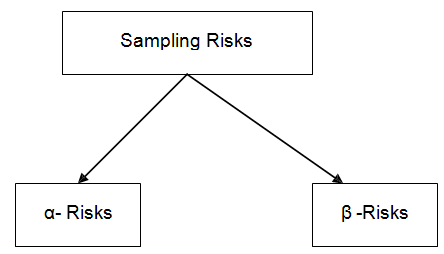Types of Sampling Risks
A guarantee that every defective item in a lot would be found cannot be stated by neither sampling nor 100% inspection, 100% inspection has the risk of monotony and other factors that will result in the inspectors missing some of the defectives. Both the risks can be quantified.
Sampling risks are of two types:
- Good lots can be rejected (the producer's risk) this risk corresponds to α-risk. The producer here is also known as Supplier alternatively.
- Bad lots can be accepted (the consumer's risk). This risk corresponds to β- risk.
The supplier's risk is the risk that corresponds to a batch of high quality products and is being rejected due to the risks involved. The consumer risk is the risk that a batch of low quality products would be accepted.
The method of making decisions using experimental data is called as statistical hypothesis test. Hypothesis test often confuses people but is the key factor of most statistical applications. Statistical tests split significant effects form mere luck or random chance. All hypothesis tests have unavoidable, risks of making the incorrect conclusion. They always involve Type I (producer's or α) and Type II (consumer's or β) risk. The Type risk is the chance of confirming that a major effect is present when it isn't. The Type II risk is the chance of not detecting a major effect when one exists. The figure explains the types of risks in detail:

Figure : Types of sampling risks
α-risks: in case of statistical testing, the significance level, Type I risk, or also called as α-risk is the "reasonable doubt". It is the chance of wrongly rejecting the quality when it is appropriate. In case of acceptance testing, it is the producer's risk or risk of rejecting a lot that meets requirements.
β - risks: In case of statistical testing, the Type II risk, is also called as β-risk. The Type II risk is the chance of accepting the quality when it is inappropriate. The "consumer's risk" is the Type II risk for an acceptance sampling plan. It is the chance of passing a lot that does not meeting the requirements.